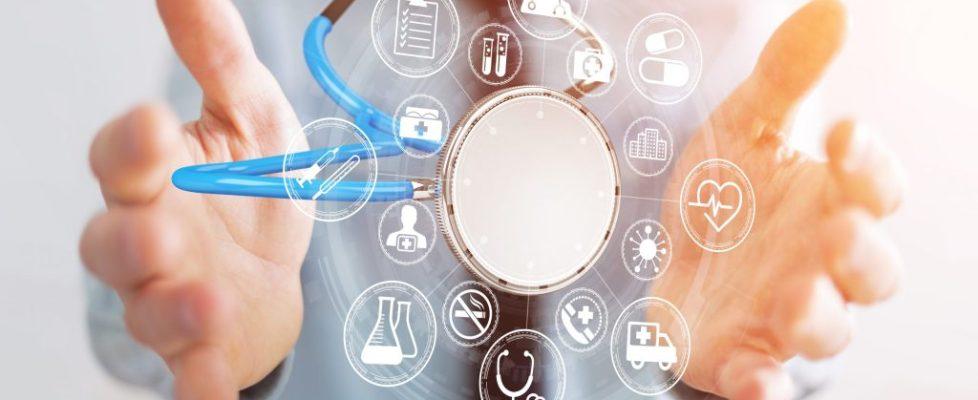CPT code set moving at the speed of digital health innovation
Physician adoption of digital health tools continues to grow, as does the infrastructure facilitating appropriate payment for their use. The Current Procedural Terminology (CPT®) code set, often called “the language of medicine,” is expanding to meet the demand.
“The CPT code set does move at the pace of medicine, and it continues to evolve and keep pace with all of the changes,” said Leslie Prellwitz, the AMA’s director of CPT content management and development.
“When you look at digital medicine, the areas with significant physician interest, confidence, utility and patient care also have significant CPT code representation,” Prellwitz said during a recent AMA webinar on telehealth, other digital health tools, and CPT coding.
The webinar built on the most recent findings of an AMA physician survey (PDF) that indicates adoption of digital tools has grown significantly among all physicians regardless of gender, specialty or age. Improved clinical outcomes and work efficiency are identified as the key drivers of adoption.
Supporting telehealth is an essential component of the AMA Recovery Plan for America’s Physicians. Telehealth is critical to the future of health care, which is why the AMA continues to lead the charge to aggressively expand telehealth policy, research and resources to ensure physician practice sustainability and fair payment.
Massive shift on telehealth
“Adoption of remote-care tools such as televisits or telehealth and remote monitoring have seen the most movement,” said Meg Barron, the AMA’s vice president of digital health innovations.
“This isn’t a huge surprise, given the spike in usage during the pandemic,” Barron added. “But when you think about this, the use of telehealth has tripled since 2019, which is a massive shift.”
Digital health encompasses a broad scope of tools, going beyond telemedicine and remote monitoring wearables, apps and more. The digital health tools that garner the most enthusiasm among physicians are televisits (57%) followed by remote-monitoring devices (53%).
In terms of ensuring proper payment, the CPT code set classifies the latter applications as either tools for remote physiologic monitoring (RPM) or remote therapeutic monitoring (RPT).
RPM CPT codes were created in 2019 and cover device setup, educating patients in the use of the devices, device supply and the management of patient treatment.
The RPM codes are intended to be used in the monitoring of a patient’s physiologic parameters such as weight, blood pressure, pulse oximetry or respiratory flow rate.
The RTM CPT codes were launched this year and are also used for device supply, device setup and patient education in their use, plus patient adherence and response to therapy.
“Therapeutic monitoring is really being able to look at the impacts of a particular treatment regimen,” Prellwitz said.
While much expansion is expected, current RTM codes focus on musculoskeletal system status, respiratory system status, cognitive behavioral therapy, therapy adherence and therapy response, and the review and monitoring of data related to a therapeutic response,
Related codes include:
- 98975 to report the initial setup, patient education and use of the equipment.
- 98976 and 98977 to report a device supply with scheduled recordings or program alert transmission to monitor the respiratory or musculoskeletal system, each 30 days.
Use of digital therapeutics is low (11%), but a greater share of physicians (40%) reported plans to incorporate the technology in the next year than they did for any other new digital health tool.
“Despite the growth in RPM, it’s still actually the least utilized of the solutions that we asked about,” Barron said. “That just speaks to the market-share opportunity that we have on hand—and the role that technology can play to help address chronic disease.”
The ability for digital health tools to help reduce stress and burnout has also gained importance as a major driver of adoption, she added.
New digital health codes for 2023
Another CPT code category launched this year involves remote therapeutic monitoring treatment-management services. Codes for these services are reported for time spent per month:
- 98980 reports the first 20 minutes of treatment management services.
- 98981 reports each additional 20-minute period of treatment management services.
Last year, the CPT Editorial Panel, authorized by the AMA Board of Trustees to revise, update and modify CPT codes, descriptors, rules and guidelines, adopted a taxonomy to describe health services or procedures delivered via augmented intelligence (AI)—often called “artificial intelligence.” The document’s guidance, contained in Appendix S to the CPT code set, took effect in January.
Codes being added in 2023 for digital ophthalmology services include:
- 0704T–0706T for remote treatment of amblyopia using an eye-tracking device and cover device supply, technical support, interpretation and report.
CPT codes enabling remote examination by pathologists or in conjunction with the use of AI algorithms are also being added in 2023.
- 0751T–0763T cover digitization of glass microscope slides, enabling remote examination by the pathologist and/or in conjunction with the use of artificial intelligence (AI) algorithms. .
“There’s a whole series of codes in that section,” Prellwitz said. “That’s very new and you don’t see that type of advancement all the time at that scale.”
A special section for CPT education has been created for the AMA Ed Hub™, an online learning platform containing CME and education, including a module series covering an overview of CPT coding basics and other topics. The CPT Network is also available for authoritative CPT coding guidance.

